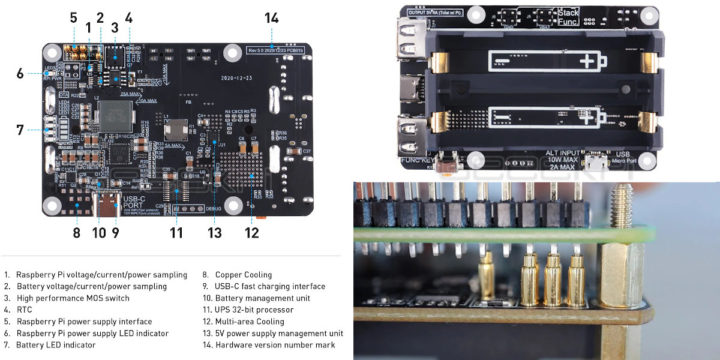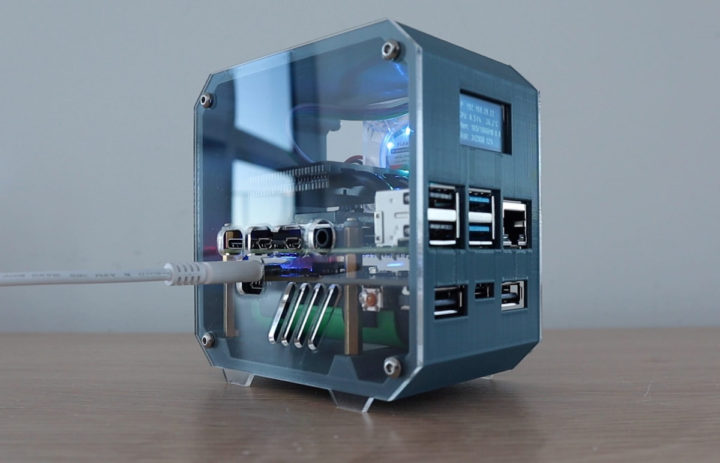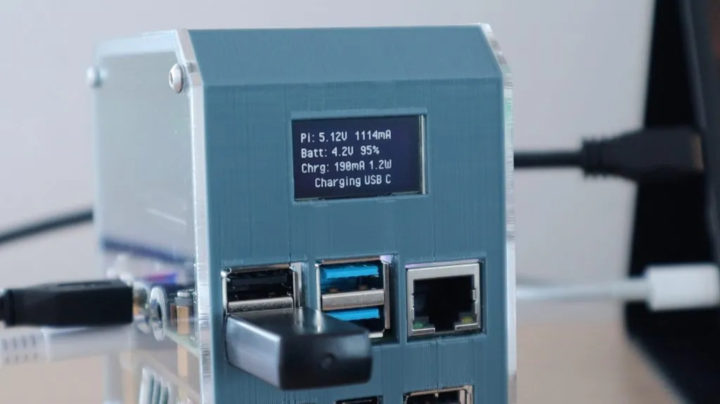While the Raspberry Pi 4 SBC has greater multimedia capabilities, it can also be used for headless projects like mini servers or networked access storage (NAS).
Michael Klements’ DIY Raspberry Pi 4 mini server is especially interesting as it’s cute, and includes a UPS to handle power failures, plus an OLED display to show information. Here’s the final result.
Ideally, you’d need a laser cutter and a 3D printer like the Ender 3 Pro to make the case, but most of the parts are off-the-shelf components including:
- A Raspberry Pi 4 SBC together with a 32GB MicroSD card for the operating system
- 52Pi/GeeekPi UPS Plus module (about $25) plus one or two 18650 Lithium-Ion Cells
- A Low Profile Ice Tower for cooling, but you could probably switch to your own (passive) cooling solution and make the device slightly more compact
- A 128×64 I2C OLED Display
- A 5V/3A Power Supply
- Accessories like a 15cm ribbon cable, four M3 nuts, twelve M3 button head screws.

The UPS module is not placed on top of the 40-pin header like most HATs, but instead relies on 6 pogo pins that connect with the headers via the bottom side of the Raspberry Pi 4 board.
You’ll find how to assemble the mini server and configure the software on The DIY Life website with detailed step-by-step instructions with plenty of photos, or in the video below.
Michael did not provide information about which server software to run on the system as it will depend on your target use case, but did explain how to setup the UPS using the instructions on 52Pi’s wiki to handle automatic shutdown, and previous instructions he had written to display information on the OLED display, but this time instead of displaying networking information, he showed UPS information such as battery charge level.
The mini server could last around one hour and a half with one 2,500 mAh battery from a full charge, I suppose under load, but this was not mentioned. The UPS and associated battery could also power an additional portable display, so you could potentially make it a portable mini PC with two batteries of greater capacity.

Jean-Luc started CNX Software in 2010 as a part-time endeavor, before quitting his job as a software engineering manager, and starting to write daily news, and reviews full time later in 2011.
Support CNX Software! Donate via cryptocurrencies, become a Patron on Patreon, or purchase goods on Amazon or Aliexpress








Very clean.